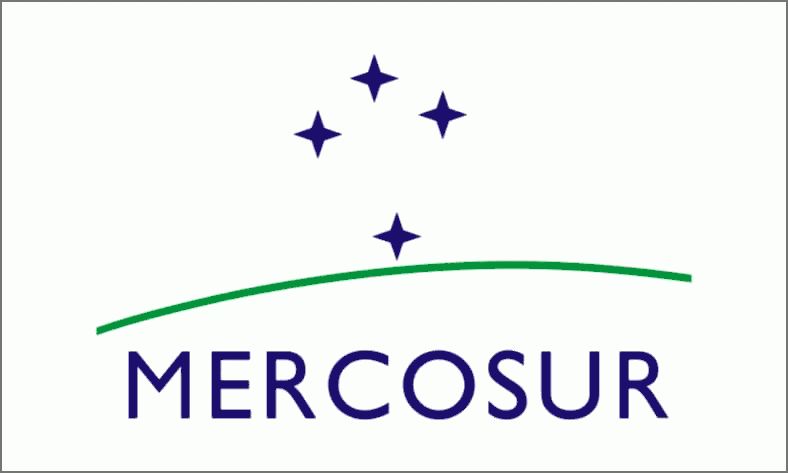The EU Plans to Seal a Long-Sought Trade Agreement with Mercosur

Even though it’s hard to believe, miracles happen. At the point when many experts had already given up on the EU-Mercosur Free Trade Agreement, three things happened.
First, Donald Trump’s protectionism has literally pushed both sides to the negotiation table. While President Trump is proud of “turning the page on decades of unfair trade deals”, as he recently mentioned in the State of the Union address, the EU is doing its best to frame itself as the leading proponent of global free trade. Last year, the EU concluded free trade talks with Japan at full speed. Now it is brokering deals not only with Mercosur (Argentina, Brazil, Paraguay and Uruguay) but also with countries such as Australia, New Zealand or India. In fact, chief negotiators from the EU and the Mercosur countries met again on Friday and continued the discussions to "move forward" in the trade talks between the two blocs. The deal is now closer than ever before.
Second, a favourable change in political pendulum in Mercosur (Argentina, Brazil, Paraguay and Uruguay) has occurred. In the past, progress in negotiations has largely been held up by the centre-left and protectionist governments of Brazil and Argentina. Now, the bloc tries to open itself up to the world with centre-right and market-friendly governments. Argentina’s President Mauricio Macri, who stands for open trade and defends globalisation, has become the main advocate on the South American side for signing a deal with the EU. It somehow happened by default as Uruguay and Paraguay are simply too small to lead, and Brazil, the biggest country in the club, is currently politically too weak (both incumbent Presidents Michel Temer and former Luiz Inacio Lula da Silva have been involved in corruption scandals). Surprisingly enough, after years of self-isolation, Argentina now looks like a star student in the region. It has not only assumed the G20 presidency but also, with a prospect of membership, increased its co-operation with the OECD (none of the South American countries is currently a member).
Last but not least, the suspension of Venezuela from Mercosur has helped the four founding members of the customs union to restart pursuing the FTA with the EU. Even though from the very beginning, Venezuela clearly expressed that it will not participate in the free trade talks, its suspension from the bloc made it easier for Mercosur to take the decision. Venezuela was formally suspended from the bloc in December 2016, when after four years since its accession, it failed to go through a set of formalities to join the club. In practice, this may mean that Latin America’s solidarity towards increasingly authoritarian regime of Nicolas Maduro in Venezuela may be vanishing.
Deal or No Deal?
It is hard to predict at this stage whether the deal will be sealed or not. It has failed so many times that it would be foolish to be too optimistic. Nevertheless, it’s true that the negotiations have gained momentum. In 2017 the EU announced that “the time is now” and that there was a “window of opportunity” for a deal with Mercosur. The same goes for South America, which, by engaging in dialogue with the EU, shows that it is ready to anchor an international trading order, which has been battered by the incumbent US President. It’s clear that it will not be possible to close a deal unless both sides make concessions. The more access to industrial goods Brussels seeks, the more concessions on agriculture Mercosur will insist on.
The meeting “Macron-Macri” held last week in Paris did not bring the expected results. The Argentinian president left Paris with empty hands as France was not willing to give up in the fight to protect its beef industry. Paris has also expressed its concern that the deal could undermine social, health and environmental norms. France is supported by Ireland which has expressed analogous fears for its beef sector. In addition, several Central European countries, including Poland, are concerned about the impact the deal could have on ethanol production from crops. Others, such as Germany, want to achieve improved market access terms for their cars and other industrial goods on which Brazil and Argentina do not want to agree. The same goes for reducing the time for getting access to Mercosur’s automotive market, as the bloc proposes, from 15 to 10 years, as Germany wants to have access to the new market much earlier.
Time Is Running Out (Unless It Is Not)
There is a relatively small window of opportunity for Mercosur to finalise the FTA with the EU. Two out of four South American states will hold presidential elections in 2018 (Brazil on 7 October and Paraguay on 22 April). The Brazilian presidential campaign, which starts in March 2018, will likely capture all attention and this might cause difficulties for administrative institutions to multitask. It is also possible that the next government could take a nationalist and protectionist turn, and the negotiations would get where they were last year.
For the EU, the potential benefits are clear: a new big market for European vehicles and car parts, and other industrial goods such as machinery, chemicals and pharmaceuticals. The same goes for Mercosur, which would sell its beef, coffee, beverages, tobacco or soya to Europe more easily. Both sides would gain access to public procurement contracts and better protection of intellectual property rights. Brussels argues that the deal, if concluded, will be, in economic terms, the largest agreement ever negotiated by the EU, eliminating more than €4bn in tariff duties that EU exporters pay every year. It would also bolster the EU’s status as Mercosur’s largest trading partner- a position that becomes increasingly threatened by China.
To conclude, if a political concession is made by both sides of the Atlantic, it is very probable that the deal will be sealed this time.

Associate Fellow, Centre for Global Europe